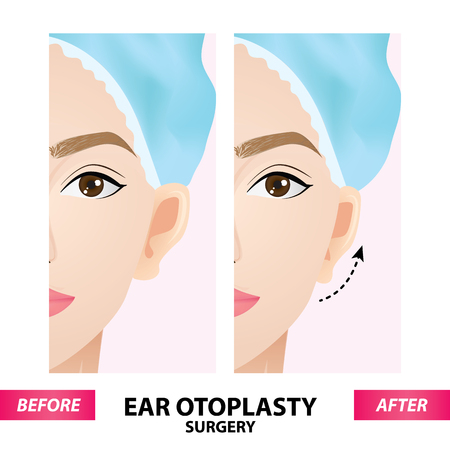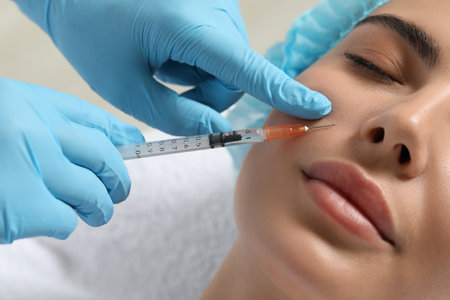Early Medical Origins of Botulinum Toxin
Long before botulinum toxin became a household name in British beauty circles, its journey began in the realm of medicine. The story starts in the early 1980s, when UK clinicians first harnessed this potent neurotoxin not for smoothing wrinkles, but as a pioneering treatment for various medical conditions. Initially, botulinum toxin—commonly known as Botox—was used to address disorders characterised by involuntary muscle activity, such as blepharospasm (uncontrollable blinking), strabismus (crossed eyes), and cervical dystonia (neck muscle spasms). These early therapeutic applications were grounded in solid clinical research and marked a significant milestone in British neurology and ophthalmology.
British doctors quickly recognised the transformative potential of this new therapy. NHS hospitals and private clinics alike saw remarkable improvements in patients’ quality of life. For many, botulinum toxin offered relief where other treatments had failed. It was within these sterile hospital corridors and consultation rooms that Britain laid the scientific foundation for what would later become an aesthetic revolution.
This initial medical use set a tone of credibility and rigour, embedding botulinum toxin’s place within British healthcare. It is this clinical heritage—a blend of careful research and patient-centred care—that continues to influence how Britons view non-surgical cosmetic medicine today, even as its uses have broadened far beyond their original intent.
2. Introduction of Botulinum Toxin in UK Cosmetic Clinics
Botulinum toxin, more fondly known as “Botox” in the public sphere, made its first foray into British cosmetic clinics during the late 1990s. At that time, the concept of non-surgical facial rejuvenation was only beginning to take hold among the British public—a nation known for both its reserved attitudes and its keen sense of style. Initially used for medical conditions like blepharospasm and strabismus, botulinum toxin’s aesthetic applications quickly caught the attention of pioneering practitioners eager to offer their clientele a subtler alternative to invasive surgery.
The Pioneers and Early Adopters
The earliest adopters were predominantly London-based dermatologists and plastic surgeons, who saw the potential of this neurotoxin to address dynamic facial lines without downtime. A few well-known names became synonymous with this new wave of beauty: Dr. Nick Lowe and Dr. Patrick Bowler were amongst those at the forefront, introducing their patients to the possibilities of age-defying treatments without going under the knife.
First Wave Clientele
The first wave of clients reflected a fascinating cross-section of British society. On one hand, there were celebrities and television personalities seeking to maintain their youthful appearances under harsh studio lights; on the other, discreet professionals and socialites drawn by word-of-mouth recommendations. Unlike today’s open conversations about aesthetic treatments, early adopters often requested confidentiality—a reflection of Britain’s nuanced approach to beauty and privacy.
Timeline: Botulinum Toxin’s Early Adoption in UK Clinics
| Year | Milestone Event |
|---|---|
| Late 1980s | First clinical uses in neurology (medical indications) |
| Early 1990s | Pioneering UK doctors begin exploring cosmetic uses off-label |
| Late 1990s | Botulinum toxin enters London private clinics for aesthetic purposes |
| 2002 | Wider media coverage and growing public interest across Britain |
The introduction of botulinum toxin into British non-surgical cosmetic medicine marked a subtle but significant cultural shift—one where innovation met tradition, and where the pursuit of timeless beauty found a new ally in science. The stage was set for an evolution that would see Botox become as much a part of British life as afternoon tea or a walk along the Thames.

3. Cultural Reception and Regulation in Britain
The British public’s relationship with botulinum toxin, commonly referred to as “Botox,” is a fascinating blend of curiosity, caution, and evolving acceptance. At first, there was a palpable sense of scepticism—mirroring the famously reserved British attitude towards anything perceived as vain or overly cosmetic. Many viewed non-surgical procedures as unnecessary indulgences, something more likely to be whispered about than openly discussed at a dinner party. However, over the years, societal perceptions have gradually shifted. With growing awareness and education, botulinum toxin treatments have found their place among a broader demographic—no longer reserved for celebrities or the elite, but embraced by everyday individuals seeking subtle enhancements and confidence boosts.
The National Health Service (NHS) has played an instrumental role in shaping this conversation. While the NHS does not routinely offer cosmetic botulinum toxin treatments, its involvement in medical uses—such as treating migraines or muscle disorders—has lent credibility to the substance itself. This duality, where Botox is both a medical intervention and a cosmetic luxury, has helped destigmatise its use across Britain. Still, the NHS maintains a clear distinction between clinical need and elective enhancement, reinforcing the importance of informed consent and patient safety at every turn.
When it comes to regulation, Britain stands out for its methodical approach. The UK’s Medicines and Healthcare products Regulatory Agency (MHRA) strictly governs who can prescribe and administer botulinum toxin injections. Only qualified healthcare professionals—doctors, dentists, pharmacists prescribers, and certain registered nurses—are permitted to perform these procedures. Further, professional bodies such as the General Medical Council (GMC) provide guidance on ethical practice and advertising standards to protect patients from misleading claims and unsafe providers. In recent years, there has been increased advocacy for even tighter regulations: campaigns calling for mandatory licensing of all practitioners and clinics offering injectables are gaining traction among both professionals and the public.
All these factors intertwine within the uniquely British context—a nation that values discretion, professionalism, and safety above all else. The result is a regulatory landscape that seeks to balance personal autonomy with collective responsibility, ensuring that the evolution of botulinum toxin use continues responsibly and in harmony with British cultural values.
Evolution of Techniques and British Aesthetic Preferences
As botulinum toxin found its footing in the UK’s non-surgical cosmetic scene, the techniques surrounding its administration evolved in tandem with shifting British beauty ideals. Early approaches were largely clinical and formulaic, focusing on standardised injection points to achieve wrinkle reduction. However, British practitioners—known for their artistry and nuanced approach—soon began to refine these methods, prioritising bespoke treatments that catered to individual facial anatomy and subtle enhancements.
Tracing the Development of Injection Methods
The journey from ‘frozen’ looks to natural results has been marked by innovation. Initially, high doses and rigid patterns led to a uniform appearance, often at odds with British preferences for understated elegance. Over time, techniques such as micro-dosing (‘baby Botox’) emerged, using minimal quantities to soften lines while maintaining facial expressiveness—a hallmark of the modern British aesthetic. The table below outlines this progression:
| Period | Technique Characteristics | Typical Outcome |
|---|---|---|
| Early 2000s | Standardised high-dose injections | Smoother skin but limited facial movement |
| 2010s | Personalised mapping; moderate dosing | Balanced wrinkle reduction with some expression retained |
| Present Day | Micro-dosing; tailored placement | Natural, refreshed look; full range of expressions preserved |
British Beauty Ideals and Non-Surgical Trends
The British have long prized subtlety over dramatic transformation—a value reflected in the growing popularity of tweakments. Rather than chasing unattainable perfection, clients increasingly seek gentle enhancements that simply make them look like a well-rested version of themselves. This shift aligns with a broader cultural embrace of authenticity and quiet confidence, setting UK trends apart from more conspicuous styles seen elsewhere.
Shifts in Public Perception: From Taboo to Mainstream Acceptance
The narrative around injectables has softened considerably in Britain. Once whispered about or hidden altogether, tweakments are now openly discussed among friends and even featured in mainstream media. The stigma has faded as public understanding grows: botulinum toxin is recognised not as a tool for vanity but as a means to boost self-esteem and maintain one’s unique character. This acceptance has been further propelled by the rise of reputable clinics and skilled practitioners who prioritise patient education and safety.
A Personal Reflection on British Aesthetic Evolution
Having experienced both early clinical approaches and today’s tailored artistry first-hand, I find the evolution exhilarating. There’s an undeniable satisfaction in seeing how far we’ve come—from rigid regimens to refined craftmanship that celebrates individuality. In my view, British non-surgical cosmetic medicine now strikes an inspiring balance between innovation, tastefulness, and respect for personal identity.
5. Botulinum Toxin in Modern British Cosmetic Practice
Today, the use of botulinum toxin in non-surgical cosmetic medicine across the UK reflects a fascinating blend of scientific advancement and British cultural sensibility. Current standards for botulinum toxin administration are meticulously regulated by professional bodies such as the General Medical Council and the Joint Council for Cosmetic Practitioners. These organisations ensure that only qualified professionals can offer treatments, upholding patient safety and ethical practice.
Professional Training and Accessibility
The growth of professional training has been significant over recent years. Reputable training academies and university-affiliated courses have raised the bar for both doctors and nurses entering the field. The result is a new generation of practitioners who approach cosmetic treatments with precision, skill, and a deep understanding of facial anatomy. In tandem, accessibility to these treatments has increased markedly; clinics now grace high streets from London to Edinburgh, making subtle enhancements available to a broad demographic while maintaining strict safety protocols.
The British Approach: Subtlety Over Showiness
A uniquely British hallmark is the preference for subtlety and natural results. Unlike some international trends that favour dramatic transformations, British clients tend to seek tweaks that enhance rather than alter. There’s an unspoken code: ‘less is more’. This ethos is echoed by practitioners who pride themselves on delivering refreshed, rested appearances—never obvious or overdone.
A Personal Reflection on Evolving Standards
As someone immersed in this world, I’ve seen first-hand how British cosmetic medicine fuses technical excellence with artistry. Consultations are conversations, not sales pitches; patient expectations are managed with honesty, and there’s a palpable respect for individuality. The evolution from early adoption to today’s gold standard has fostered trust in both the procedure and its providers. Ultimately, the modern British approach to botulinum toxin isn’t just about smoothing lines—it’s about celebrating confidence in one’s own skin, crafted through careful hands and a distinctly local sensibility.
6. The Future of Botulinum Toxin in British Non-Surgical Aesthetic Medicine
As we look ahead, the future of botulinum toxin in British non-surgical aesthetic medicine appears both promising and dynamic. Innovation continues apace, with researchers and practitioners collaborating to refine techniques, develop new formulations, and expand the range of treatable concerns. Emerging trends point towards more subtle, nuanced results—reflecting a broader shift in UK beauty standards that favour natural enhancement over conspicuous alteration.
Innovations on the Horizon
The next generation of botulinum toxin treatments is expected to focus on precision and longevity. Developments such as micro-dosing and targeted application methods offer bespoke results tailored to individual facial anatomy and movement. Moreover, novel types of neurotoxins are in clinical trials, promising faster onset times and extended duration—potentially allowing clients to enjoy smoother skin with fewer appointments.
Up-and-Coming Treatments
A growing area of interest is the “prejuvenation” approach, where younger adults seek preventative treatments to delay the earliest signs of ageing. This trend is gaining traction across London and other UK cities, reflecting a proactive attitude towards self-care among millennials and Gen Z. Additionally, combination therapies pairing botulinum toxin with other modalities—such as dermal fillers, skin boosters, or energy-based devices—are increasingly popular for holistic facial rejuvenation.
Shifting Demographics and Beauty Ideals
The UKs demographic landscape is changing, bringing greater diversity in age, ethnicity, and aesthetic preferences. Clinics are adapting by offering culturally sensitive consultations and tailoring treatments to meet a wider variety of skin types and facial structures. At the same time, public conversations around inclusivity and body positivity are reshaping ideas of beauty; subtlety, authenticity, and self-expression are becoming central values in the British aesthetics scene.
Ultimately, as science advances and cultural attitudes evolve, botulinum toxin will remain at the forefront of non-surgical cosmetic medicine in Britain. Its journey—from medical marvel to everyday beauty staple—continues to be shaped by innovation, patient empowerment, and the ever-changing tapestry of British identity.


